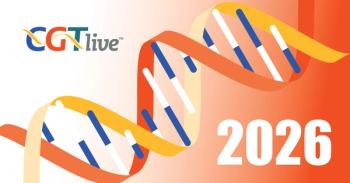
ARCUS–Mediated Gene Editing Shows Promise for Duchenne Muscular Dystrophy In Preclinical Work
Gary Owens, MS, the associate director for gene therapy discovery at Precision Biosciences, discussed data he presented at ASGCT’s 2023 conference.
Although a great stride in the treatment of Duchenne muscular dystrophy (DMD) was recently made with the FDA’s approval of the first gene therapy,
Gary Owens, MS, the associate director for gene therapy discovery at Precision Biosciences, presented data from the company’s preclinical research at
CGTLive: Can you give some background information on the study you are presenting at ASGCT’s 2023 conference? What problems or unmet needs is the study attempting to address?
Gary Owens, MS: We're using our ARCUS platform to try to restore function to patients with Duchenne muscular dystrophy. Right now, we're in the preclinical stage. We're doing work in disease models and in vitro. Patients with DMD lack intact dystrophin protein, which leads to fibrosis; patients lose the ability to walk in their teens and expire in the second or third decade of life.
Can you give an overview of the key results of the study?
The highlights of the presentation showcase our in vivo proof-of-concept of excision of the “hotspot” region of the dystrophin gene. We show excision of that region, which is 500,000 base pairs, and home to [mutations found in up to 50% of patients with DMD]. We show restoration of dystrophin protein and then we show that that restoration of protein leads to a functional response in the muscle. We measure isometric force, and we show that the treated disease model is significantly more forceful than the untreated. In fact, the treated disease model has 86% of what the force is in a nondisease model. It's really exciting to us. We also show that we restore dystrophin protein to the muscle fibers by histology and we show that we transduce and edit PAX7+ cells, which are a marker for muscle satellite cells. Muscle satellite cells are key for muscle regeneration, and a very important milestone, I think, for this dataset. We're super excited to share that with the people here, the physicians, and the patients out [there] that need treatment.”
What would you say are the main implications that the healthcare community should take away from these findings?
Our preclinical data shows that our ARCUS platform is capable of restoring dystrophin protein and dystrophin function and that this is a permanent edit in the genome—so it should be life-lasting and durable.
Can you speak to the challenges in this research?
We're doing some complex gene excision here. Most of the assays that are in place for this we had to develop in-house; we utilized contract research organizations for some of the muscle force testing. I think the data is incredibly encouraging. It's encouraging to the patient population; it’s encouraging to us.
Transcript edited for clarity.
REFERENCES
1. Sarepta Therapeutics Announces FDA Approval of ELEVIDYS, the First Gene Therapy to Treat Duchenne Muscular Dystrophy. News release. Sarepta Therapeutics. June 22, 2023. Accessed July 14, 2023. https://investorrelations.sarepta.com/news-releases/news-release-details/sarepta-therapeutics-announces-fda-approval-elevidys-first-gene
2. Lewis W, Owens G, Jordan-Steele M, et al. ARCUS-mediated excision of the “hot spot” region of the human dystrophin gene for the treatment of Duchenne muscular dystrophy (DMD). Presented at: American Society of Gene and Cell Therapy (ASGCT) 2023 Annual Meeting. May 16-20, 2023; Los Angeles, CA.
Newsletter
Stay at the forefront of cutting-edge science with CGT—your direct line to expert insights, breakthrough data, and real-time coverage of the latest advancements in cell and gene therapy.






























